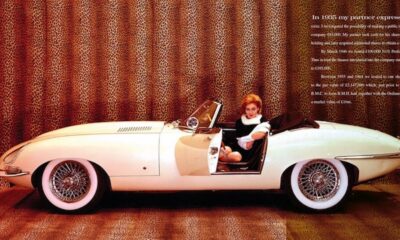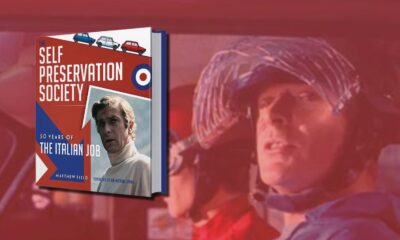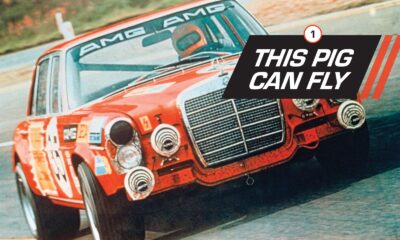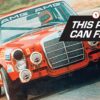Book Review
TRANS-AM CHALLENGERS – THE CARS THAT RIVALLED MUSTANG & CAMARO SUPREMACY
TRANS-AM CHALLENGERS
THE CARS THAT RIVALLED MUSTANG & CAMARO SUPREMACY
Where were you in ’72? I was at Rice University, wondering why-the-hell I was at Rice University, as were any number of my classmates and all of my academic advisers. Fully in line with my academic downturn was the attention I continued to give to most things automotive, including the somewhat diminished excitement surrounding the Trans-Am racing era. And that ’72 season, along with the building excitement at the series launch in 1966, is credibly chronicled in Steve Holmes’ TRANS-AM CHALLENGERS – THE CARS THAT RIVALLED MUSTANG & CAMARO SUPREMACY.
Even those born in ’94 will probably have an idea of what happened in ’64. The big automotive news of that year was the spring intro of Ford’s all-new Mustang at the New York World’s Fair. (With today’s social media, Ford would probably rent a restaurant…). Built atop the Bob McNamara-spec’d Falcon, the Mustang – especially with its soon-to-be-included V8 – would put the ‘boom’ in Boomer. With coupe, convertible and fastback variants this first ponycar was affordable, and would capably satisfy the 16-year olds and 66-year olds, secretaries or senior vice-presidents. With that much going for it, Ford took it racing.
Concurrent with the Mustang (and subsequent intro of Chevy’s Camaro) was the SCCA’s launch of a racing series to supplement the organization’s amateur footings. In its announcement of the Trans-Am series in January of 1966, the SCCA would build on the FIA’s Appendix J Group 2 Touring Cars regulations, popularized in the European Group 2 Championship, along with various other national championships and the Australian Touring Car Championship. And if all of this looks to be somewhat ‘in the weeds’, know Mr. Holmes doesn’t stay long.
Put simply, the SCCA created an Under 2000cc category (U2!) and Over 2000cc category (O2). As an import enthusiast, I enjoyed the Ford Cortinas and Alfa GTAs as much or more than the Mustangs, Camaros and Barracudas. Until 1970 the U2 and O2 category would compete in the same races, although the U2 cars would take but two outright wins – including the inaugural Trans-Am, won by driver Jochen Rindt in an Alfa GTA.
Regardless of your import or domestic preferences, author Holmes mixes both the broader themes and lesser info with readable prose and an almost overwhelming selection of period photography. The big players are obviously there, but then, so are the small players, such as independent entry Bill Stoutenberg driving a Barracuda, along with various Corvair (even Mini!) entrants. And if/when you’ve seen enough of the cars and drivers, there are also multiple references to the tracks, from Green Valley Raceway in North Texas to Northern California’s Laguna Seca.
While the Trans-Am racing flame burned, it burned brightly. But that shining moment began to dim concurrent with the plethora of EPA regs and safety mandates, beginning in the late ‘60s. And while those of us now using ‘analog’ as a descriptive embraced racecar platforms remaining relatively close in layout and construction to their factory donors, that wasn’t the direction builders and/or organizers were going. Production-based platforms were soon supplanted by race-specific tube frames.
The cars competing in the early Trans-Am were immediately historic – and would eventually become iconic. The Penske organization began with Camaros, but the pic used for the book’s cover is of the team’s Sunoco Javelin in red, white and big blue. And with the cars are their drivers, including Mark Donohue, Parnelli Jones, Dan Gurney and Bob Tullius.
For me, TRANS-AM CHALLENGERS – THE CARS THAT RIVALLED MUSTANG AND CAMARO SUPREMACY is a smorgasbord of nostalgia. If you weren’t there in the ‘60s, you can easily rejoin the fray for a $45 outlay. The book is published by Veloce, and more info is available at www.veloce.co.uk.








































